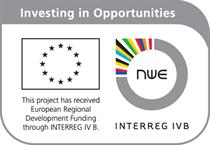Remediation techniques
Remediation? Combination!
Remediation in urban areas must not hinder economic and social activities. In most cases, remediation must therefore be achieved 'in-situ';. This means treating the pollution without excavation. There are countless highly promising remediation techniques but most of these are not widely used. The CityChlor project revealed that the specific characteristics of the site play a crucial and often limiting role. Different types of pollution are frequently mixed up. Straightforward remediation is thus not enough. Also a subsurface contaminated with chlorinated solvents usually requires the treatment of a relatively small source zone of high contamination that is frequently accompanied by a large plume of contaminated groundwater. All possible means of eliminating the sources of pollution should be examined. A cost-effective remediation must differentiate between the source zones and the plumes.
Complete restoration can be difficult, so a combination of techniques is the smartest approach. The trick is to ensure that you use the right techniques at the right place and time. Researchers from CityChlor tested techniques for the characterisation and remediation of soil, groundwater, soil gas and indoor air at pilot sites. The tests revealed that the smartest approach often involves a combination of several techniques. The best combination depends on a wide range of factors. The researchers have written up the various test results in codes of best practice, reports and manuals. This meets the need of soil remediators for new tools whose effectiveness has been evaluated.
Documents
- Remediation options suitable for inner city re-development - Technical book for source and plume remediation (5139 kB) (pdf, 5 MB)
- The combination of aquifer thermal energy storage (ATES) and groundwater remediation, 2012-04-20 (3813 kB) (pdf, 3.7 MB)
- In Situ Chemical Reduction using Zero Valent Iron injection - A technique for the remediation of source zones (2828 kB) (pdf, 2.8 MB)
- Code of Good Practice - In-situ chemical oxidation, April 5 2013 (6197 kB) (pdf, 6.1 MB)
- In situ thermal remediation of contaminated sites - A technique for the remediation of source zones (975 kB) (pdf, 1 MB)
- Monitored Natural Attenuation - Option for plume management (739 kB) (pdf, 739 kB)
- CityChlor Think-Tank Conceptual site model - Bio-washing machine (794 kB) (pdf, 794 kB)
- Integration of results CSM ‘Bio-washing machine' - Different innovative characterization methods and models for optimisation of the area-oriented approach (7243 kB) (pdf, 7.1 MB)
- Vapour intrusion risks - at two sites in the urban area of Utrecht (8918 kB) (pdf, 8.7 MB)
- Contaminant mass flux measurement in Utrecht - using Traditional sampling, SorbiCell, Sorbiflux and PFM (8177 kB) (pdf, 8 MB)
- Biodegradation capacity in Utrecht - using innovative next level technologies (12603 kB) (pdf, 12 MB)
- Geohydrological modelling - Predictions for an area-oriented approach for groundwater contamination in the City of Utrecht (5362 kB) (pdf, 5.2 MB)

